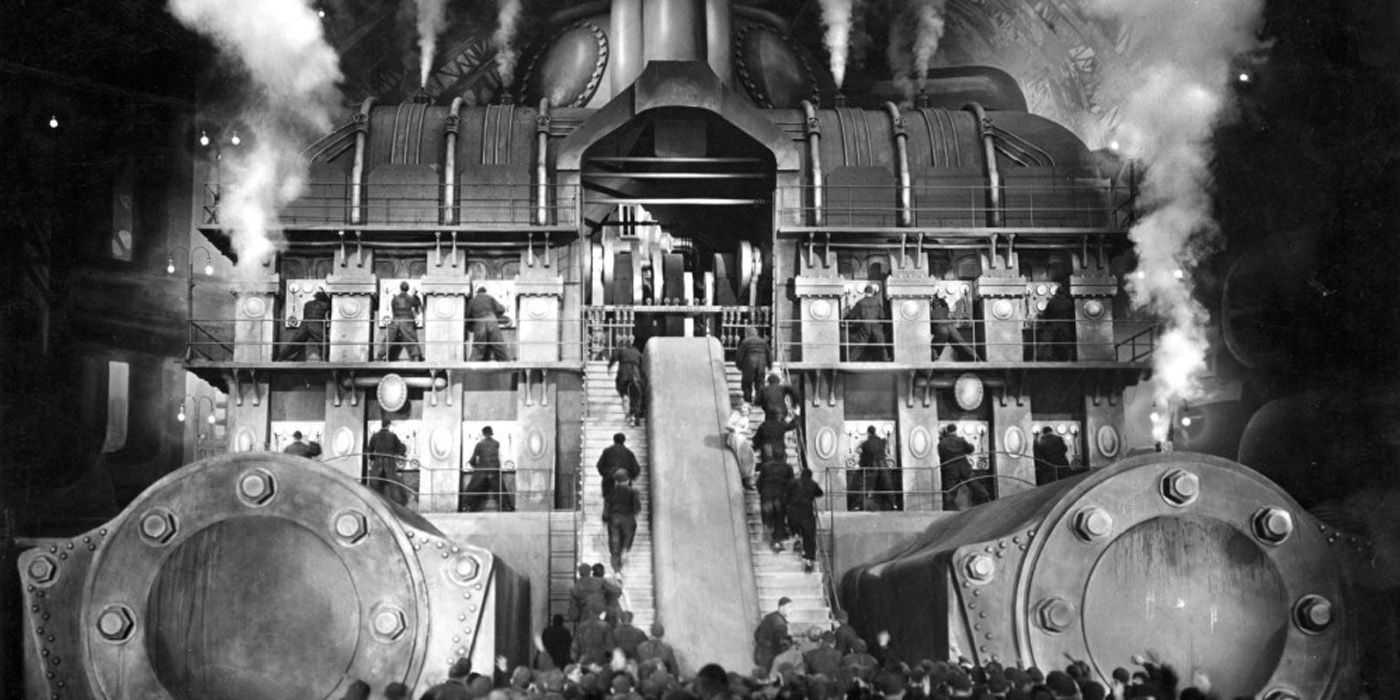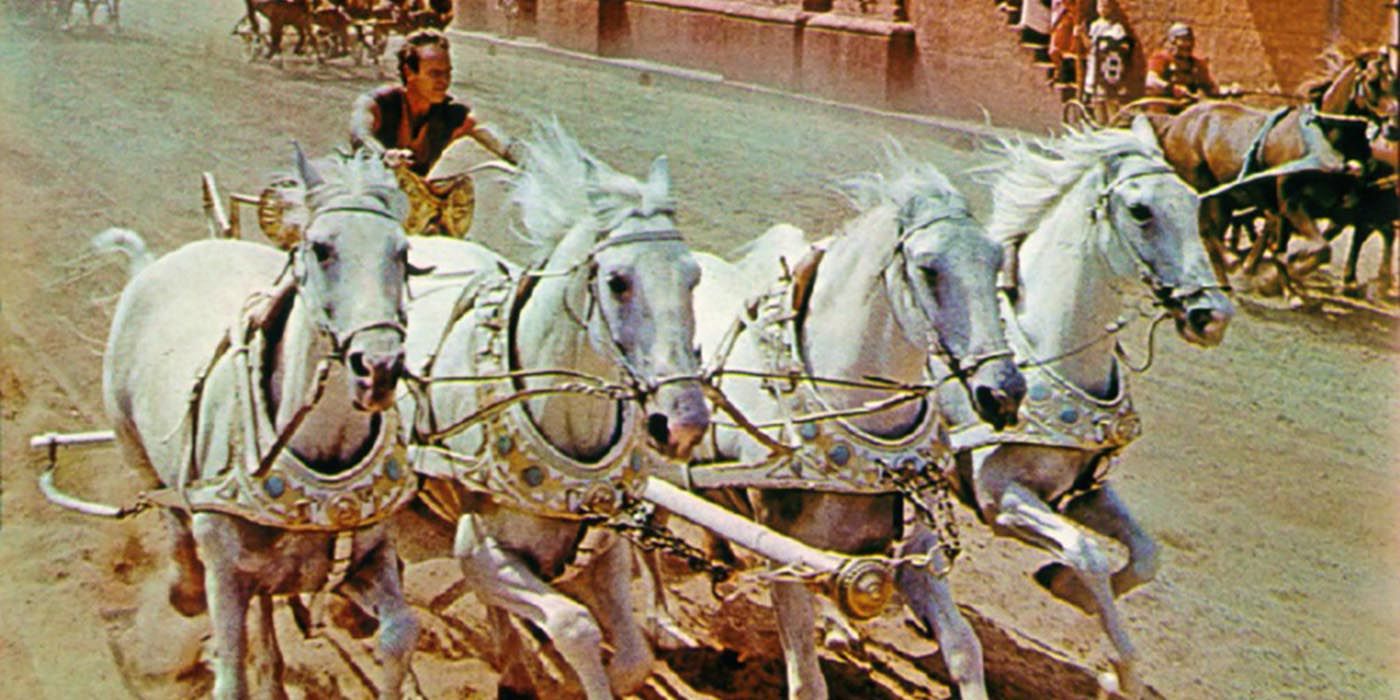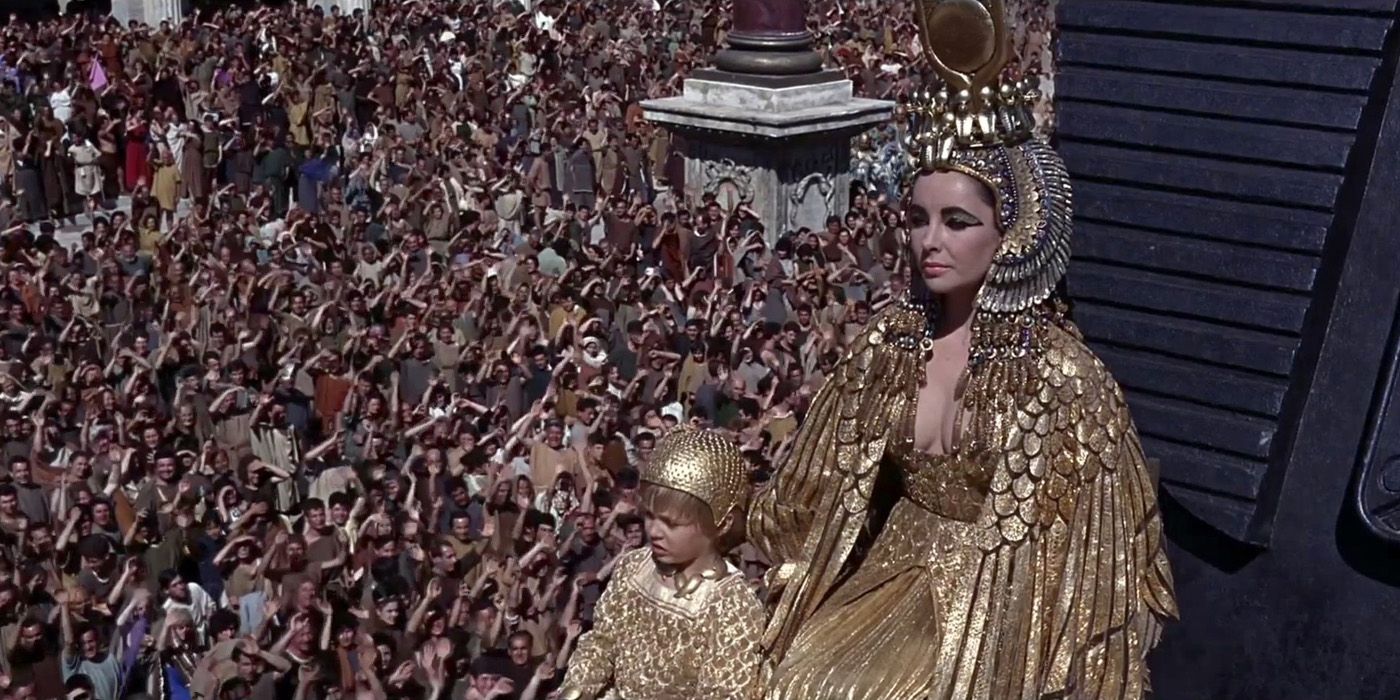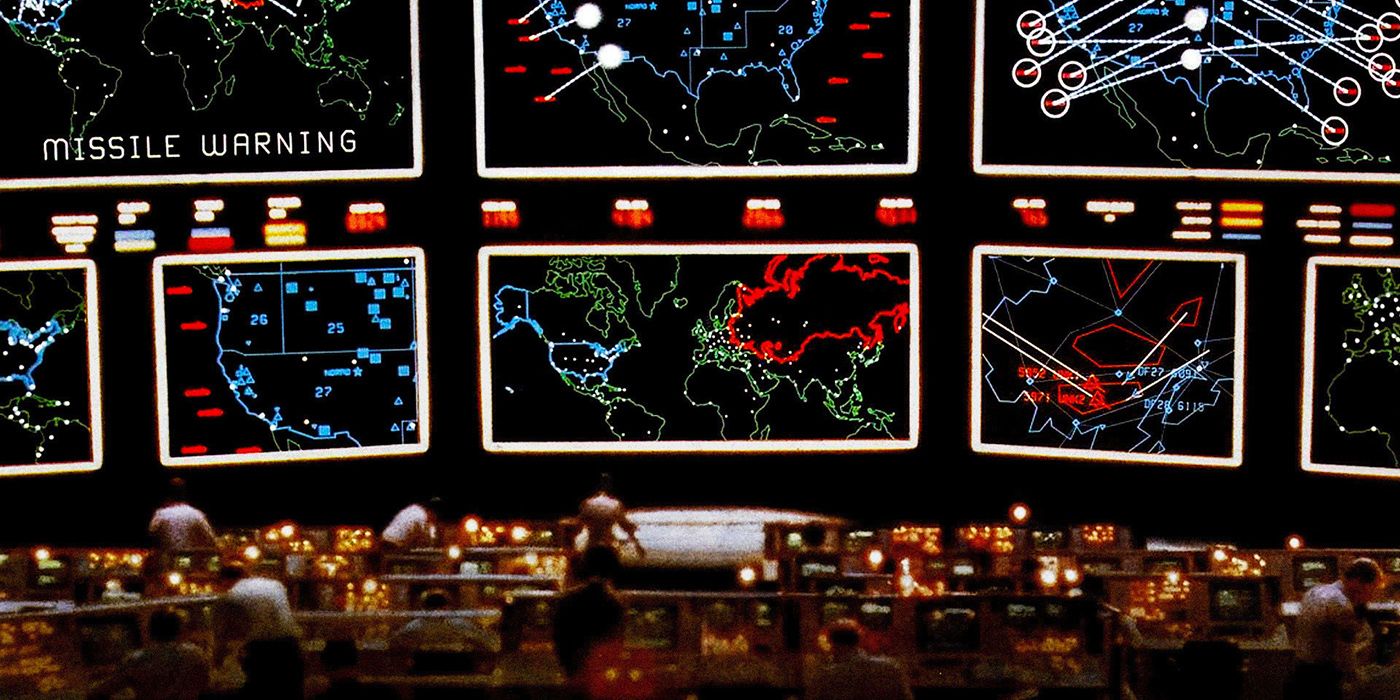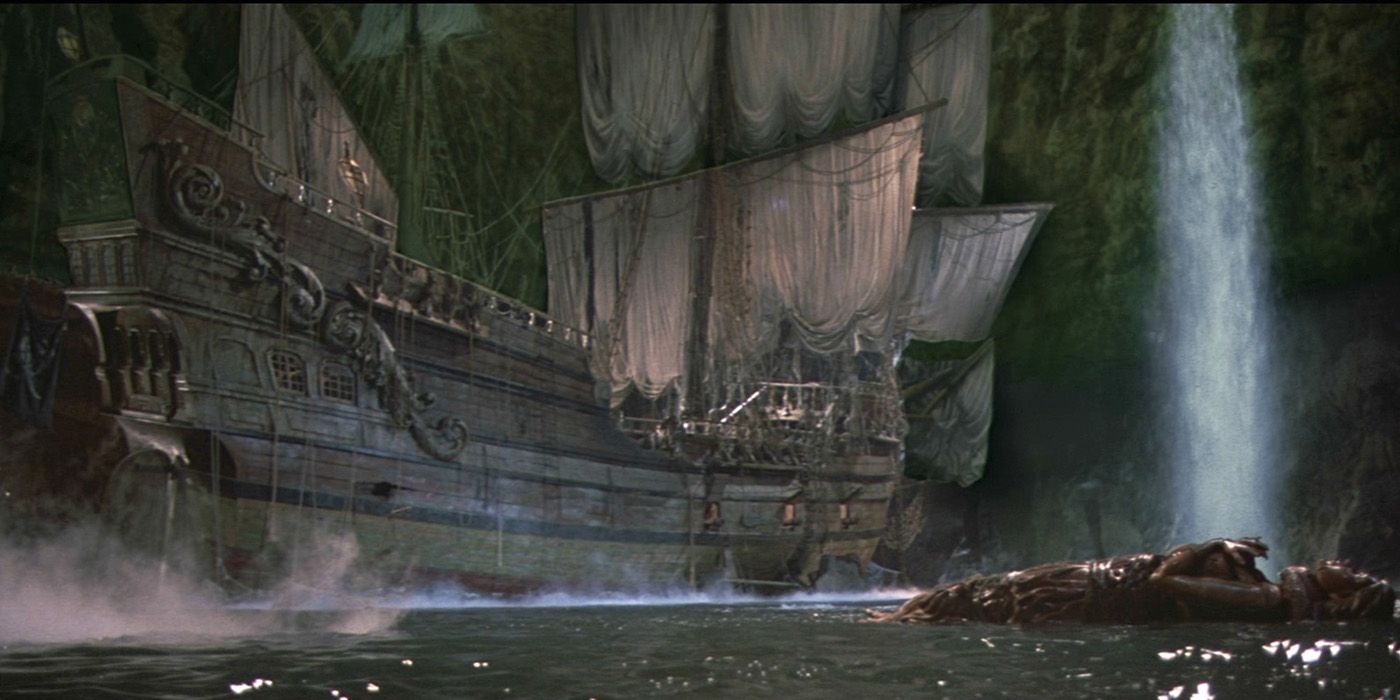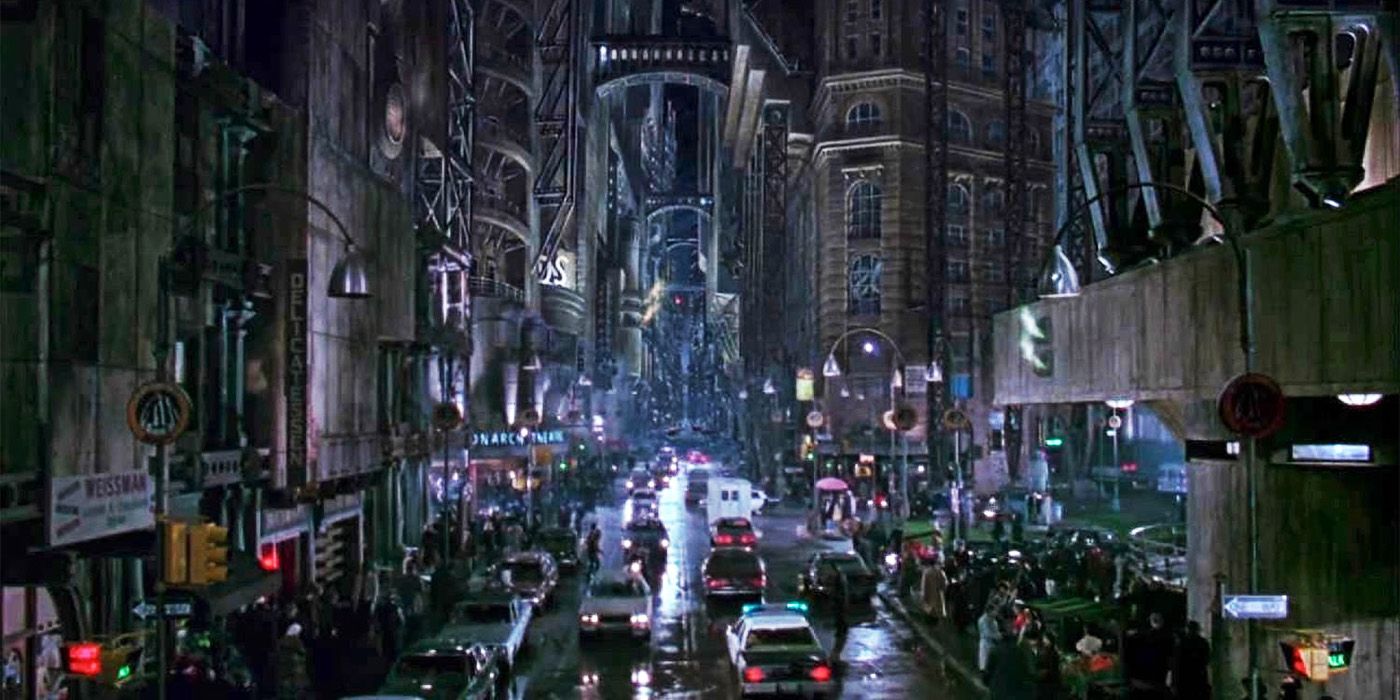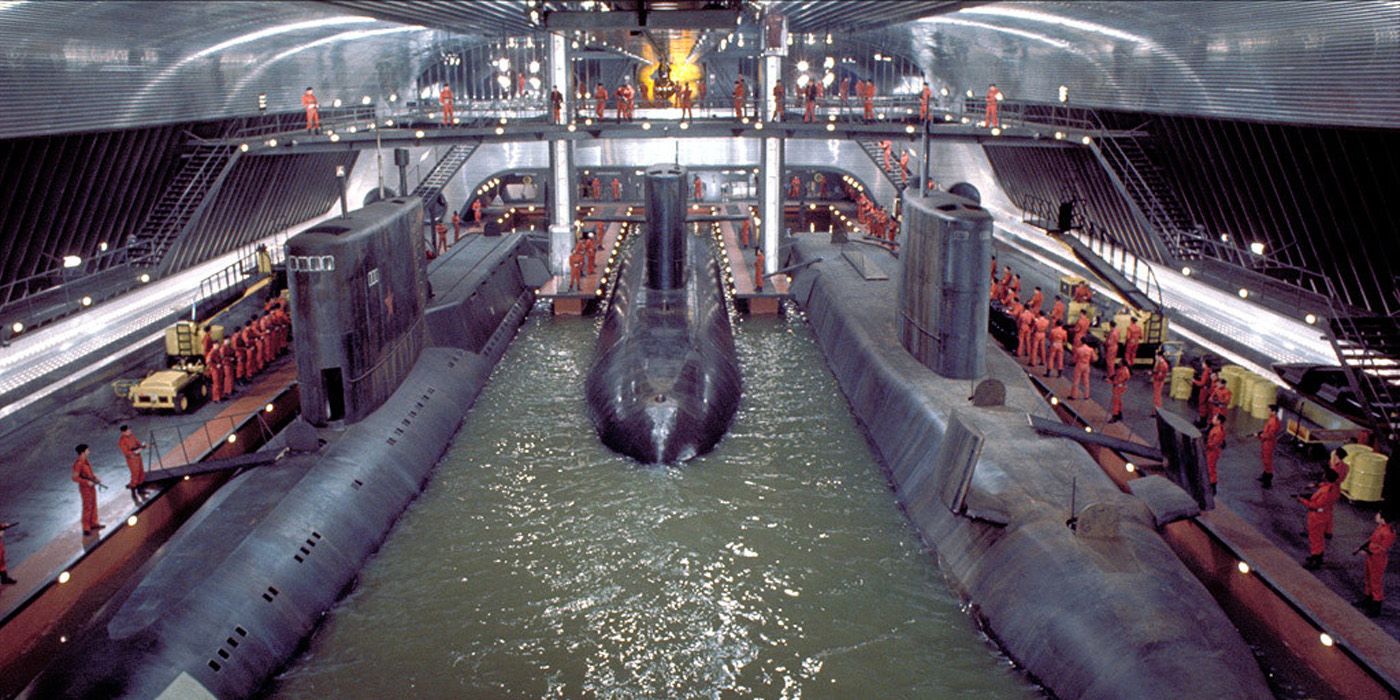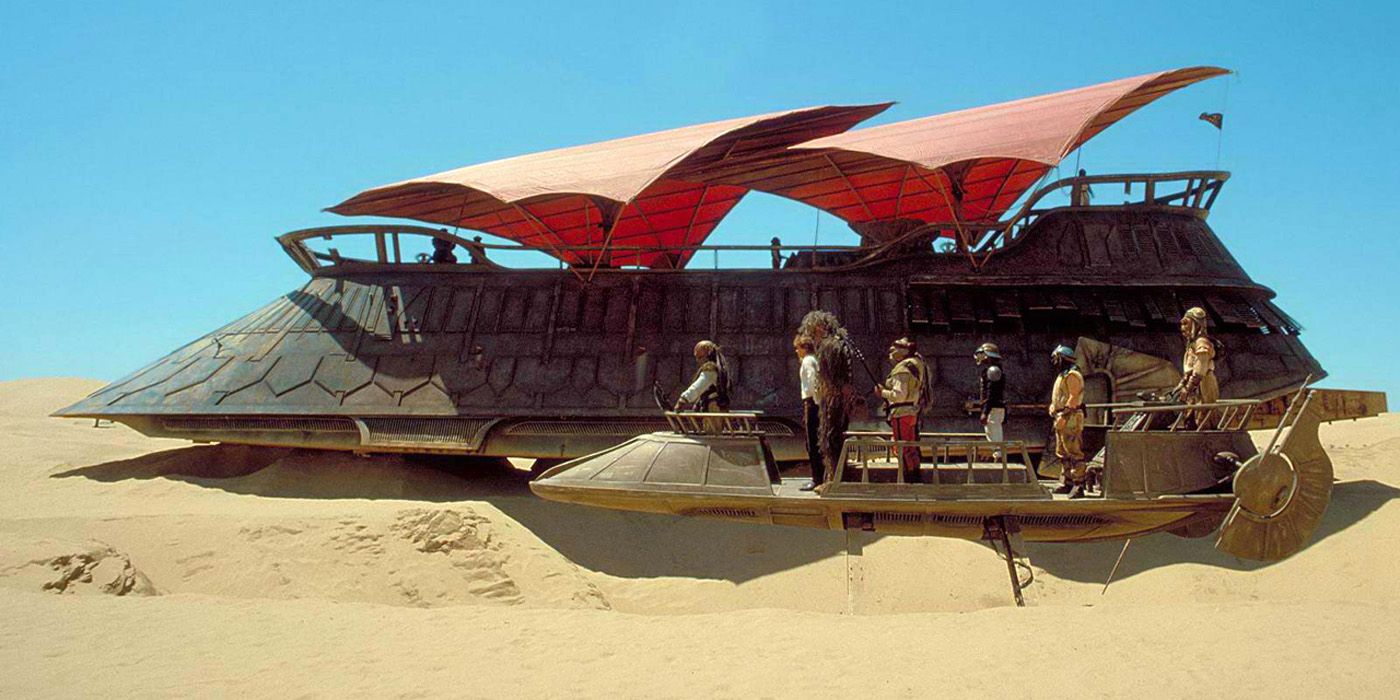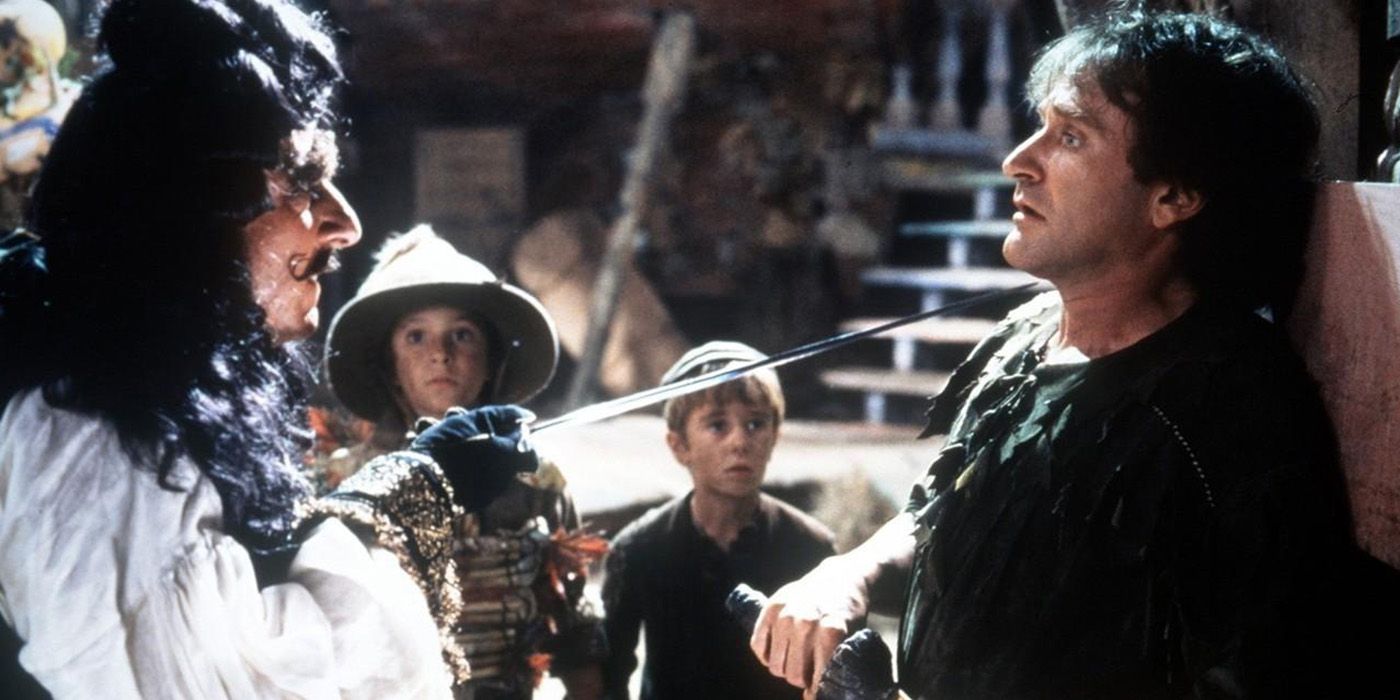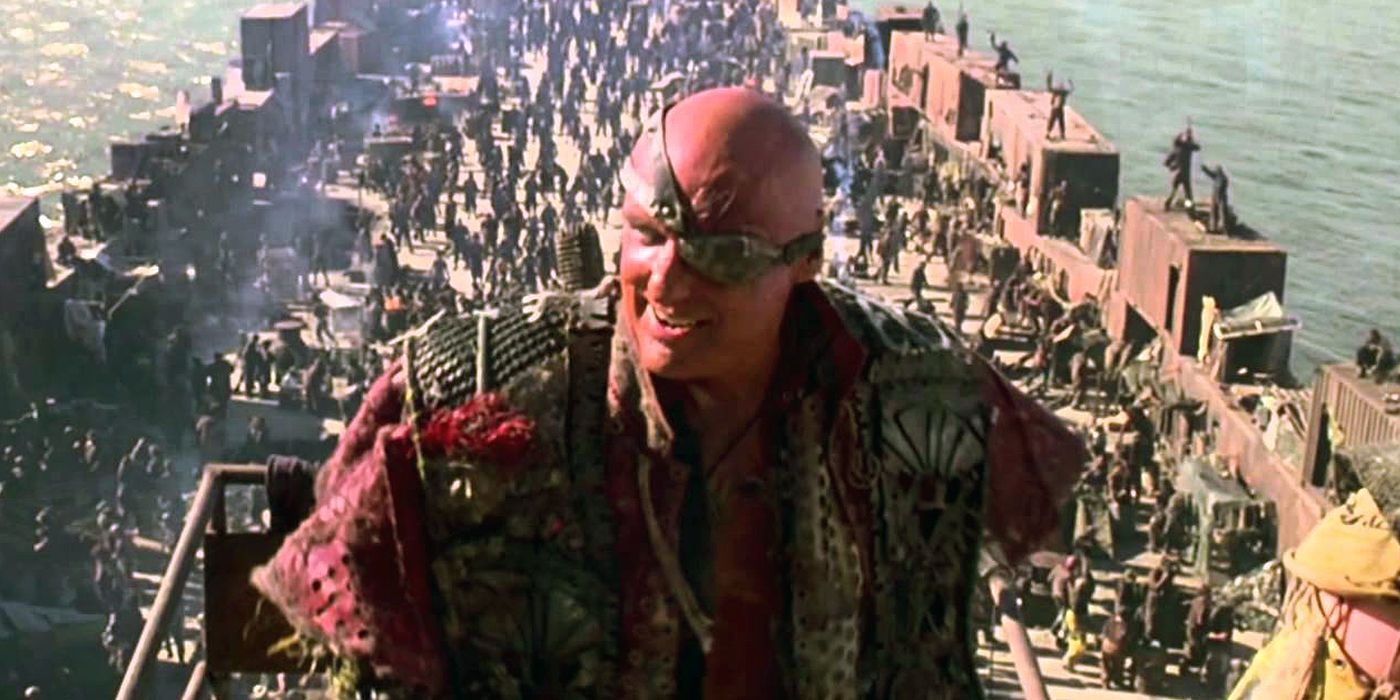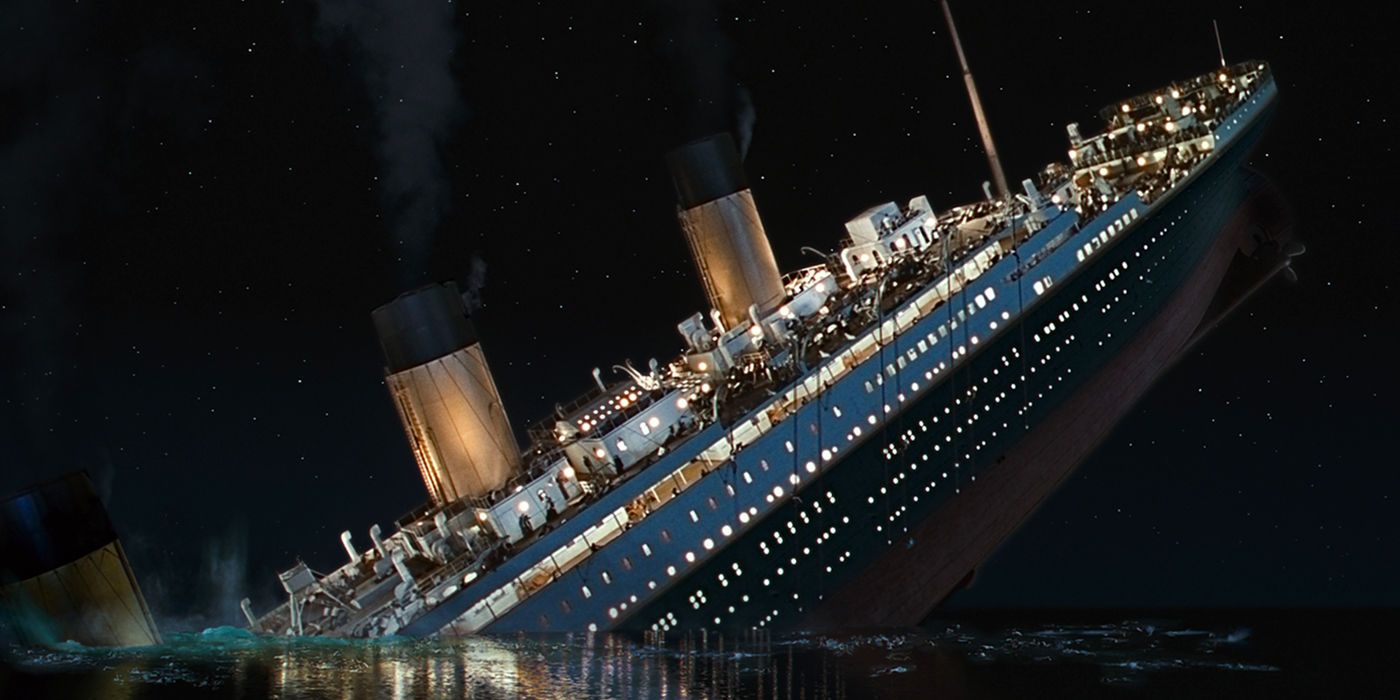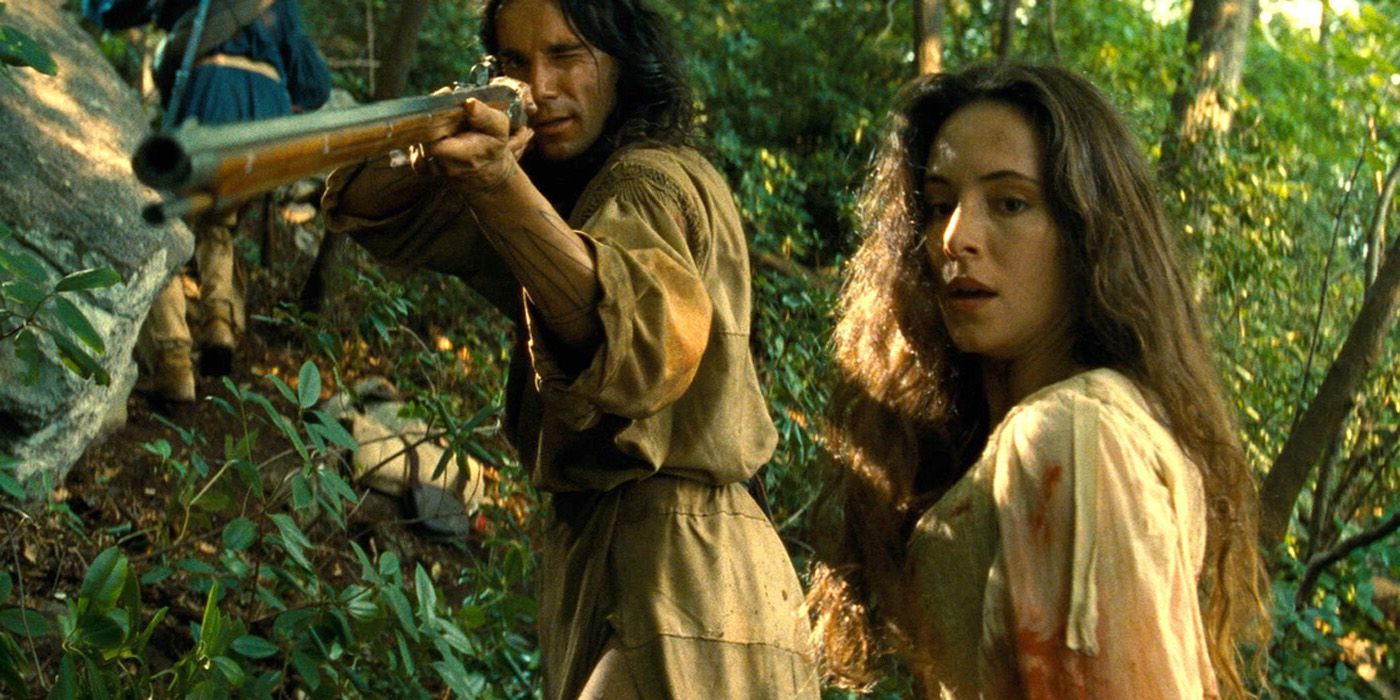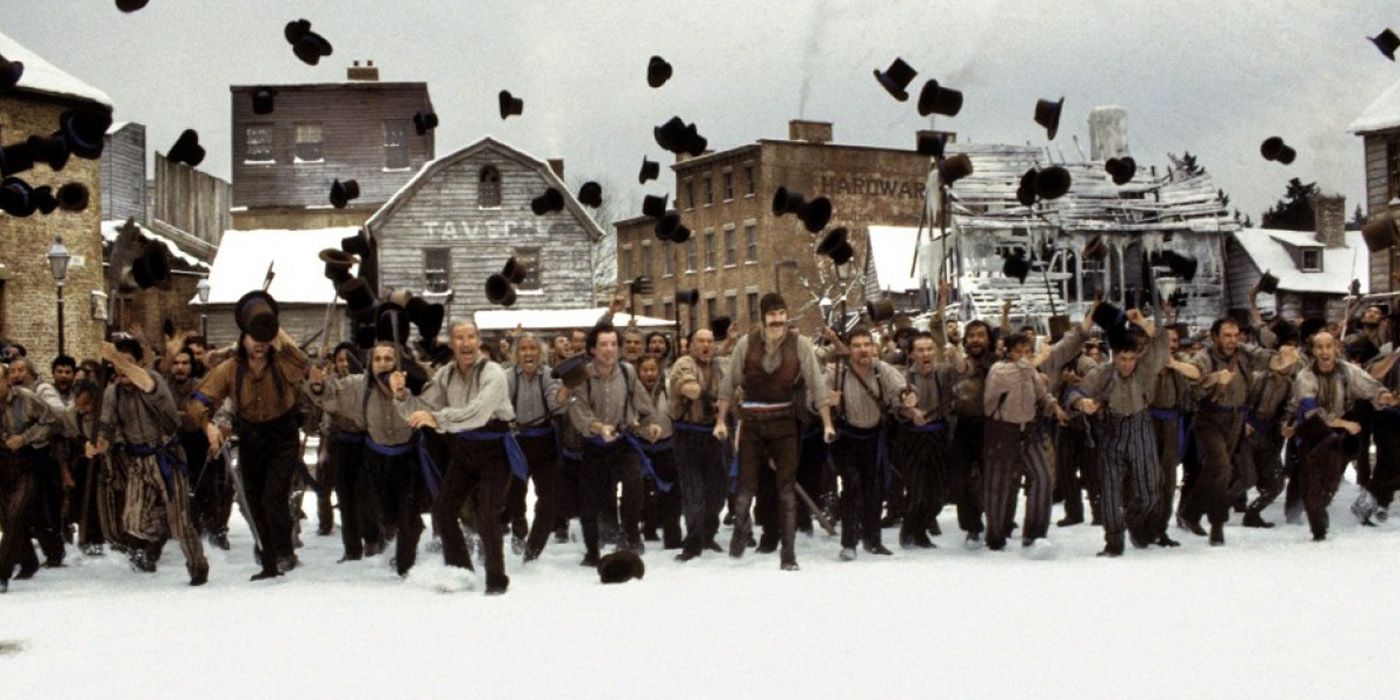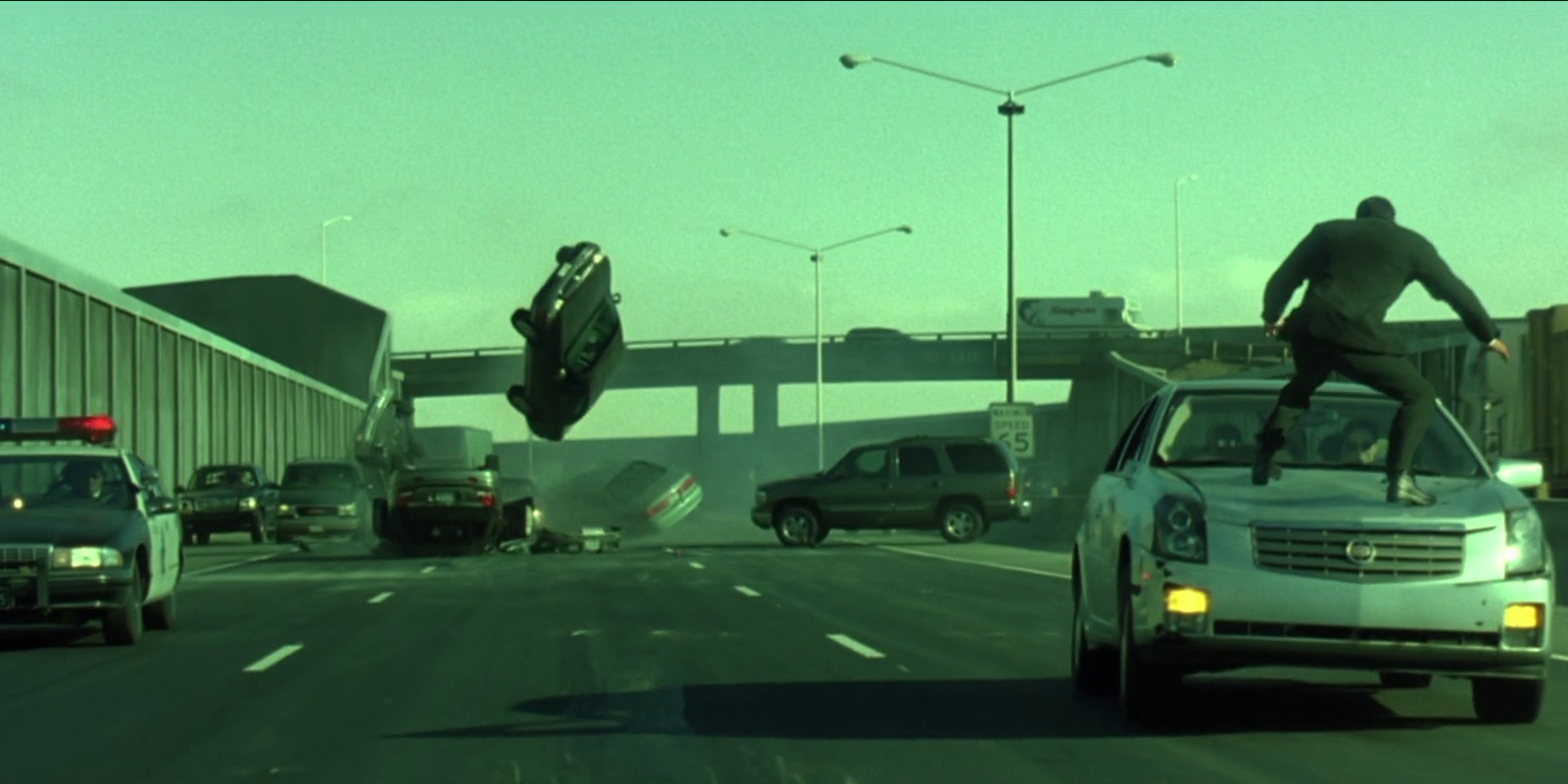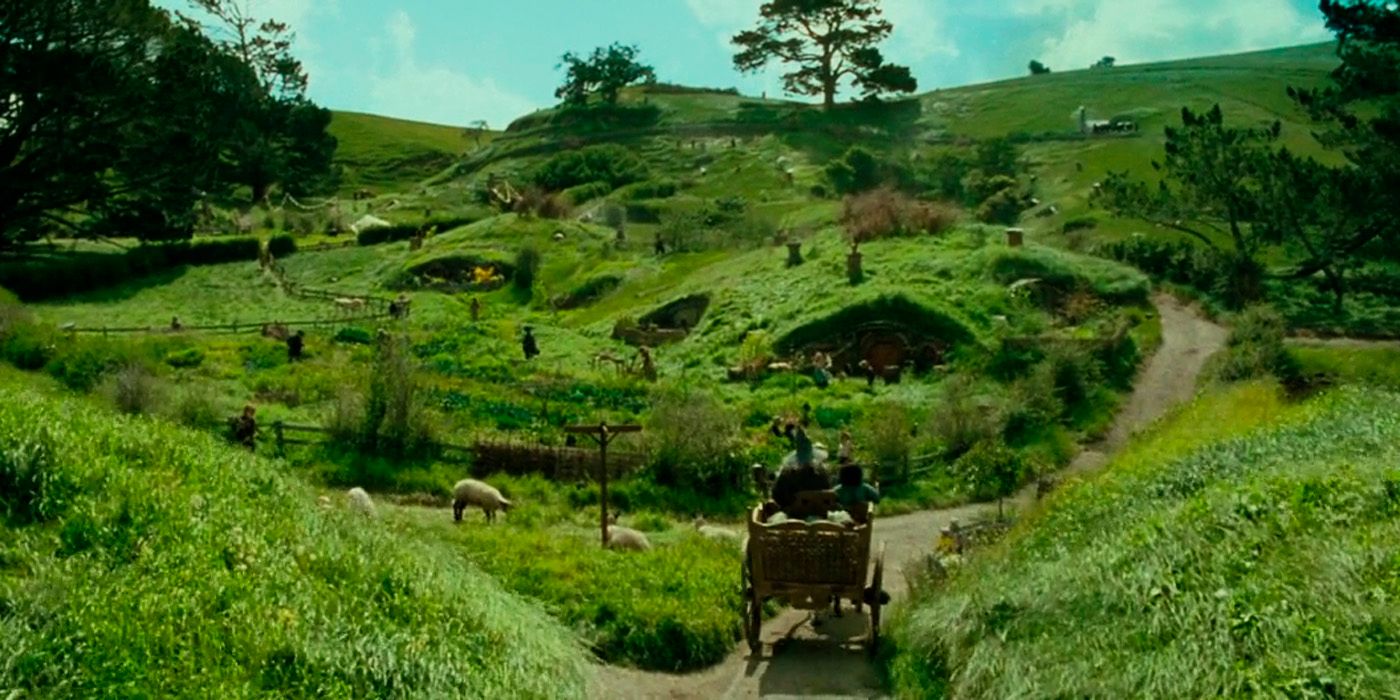We've always felt quite sorry for production designers. The people tasked with bringing a director's vision into the real world and building the environments that actors get to inhabit can toil away for months and sometimes even years at a time. The end result of all their hard work can usually be measured in a few minutes of screen time that, more often than not, goes completely unnoticed by viewers. Then, all that painstaking attention to detail, all that sourcing of historically accurate props and other assorted minutiae, gets torn down to make way for the next production.
Occasionally though, a film's set can be so enormous, so overwhelmingly fantastic in scale and scope, that it becomes as integral to the story as the lead actor's performance.
From the cinema's earliest depiction of futuristic mega-cities to a certain unsinkable sinking ship, the movies have given us some incredible examples of the set designer's imagination and ambition.
Here are the 15 Biggest Sets In Movie History.
15. Metropolis City - Metropolis
Pretty much the DNA of the sci-fi genre, Metropolis has been cited as a major influence on the work of devotees ranging from Charlie Chaplin, George Orwell, George Lucas, and Ridley Scott. Oh, and Madonna.
The 1927 epic still has the power to amaze now, nearly 90 years on, with its achingly stylish visuals of a futuristic dystopian city rising above a subterranean inferno of industrial machines. The city set, covering more than 60,000 sq ft of the Babelsburg Studios near Berlin, mixed in elements of Art Deco, Cubism, and Bauhaus design as well as hints from the Old Testament Tower of Babel and the New York skyline. Whether it's the high-rise superstructures of the ruling elite or the nightmarish underground hell-holes of the oppressed workers, the shadowy, Gothic set remains terrifying even today.
Cinematographer and effects expert Eugen Schüfftan developed his Schüfftan process for the film, using a specially created mirror to insert actors into miniature sets of skyscrapers, a process still being used as recently as 2003 for Peter Jackson's Lord of the Rings: The Return of the King.
Production on the movie took two years and cost over 7 million Reischsmarks, or the equivalent of $200m, making it one of the most expensive silent movies of all time.
14. Chariot Arena - Ben-Hur
Back in the day, with TV becoming more affordable and everyone deciding they'd rather stay home for their entertainment, the movie studios were suffering. MGM decided on a last ditch make-or-break gamble and threw the biggest budget ever assembled at remaking the 1925 film Ben-Hur. Spurred on by Paramount's success with The Ten Commandments the year before, it scraped together a-then record $15.4m and set about creating an epic so spectacular that it would force people out of their homes and back into theatres.
It was a gamble that paid off. One of the greatest movies ever made, Ben-Hur saved MGM from bankruptcy, won 11 Oscars, and became the fastest and highest grossing film of the '50s and the second highest of all time as of then.
Taking more than 6 years to prepare for the shoot, the 300 sets covered 340 acres of backlot. The chariot arena, modelled on the Circus Maximus in Jerusalem, ate up around a quarter of the film's entire budget. It became the largest film set in history, measuring 2000ft in length and stretching across 18 acres, and took 1000 workers an entire year to carve out of an Italian rock quarry. It was covered in 40,000 tons of sand imported from Mexico.
The breathtaking chariot race remains one of the most famous sequences in movies, with over 15,000 extras swarming the arena and, apart from two of the most dangerous stunts, Charlton Heston and Stephen Boyd did all the chariot driving themselves.
13. Forum of Rome - Cleopatra
The only film in history to be the highest-grossing movie of the year and still make a loss, Cleopatra finally broke even in 1973, ten years after it was released. With a budget that went from an initial $2m up to $31m, the production nearly bankrupted 20th Century Fox and nearly killed its star, Elizabeth Taylor. After filming at Pinewood Studios during a typically glorious English winter, the unrelenting rain damaged the enormous and highly elaborate sets beyond repair and struck Taylor down with severe pneumonia.
With filming halted for several months while she recovered, they decided to shift production to the warmer climes of Rome, where more than 70 sets had to be rebuilt from scratch. Deciding that the ancient Romans lacked ambition, the movie's forum was built three times the size of the original, at more than 1600ft high and over 1000ft wide. The construction was so huge that Italy virtually ran out of building materials.
Living by the adage that if something's worth doing, it's worth overdoing, the movie set other records for excess. The scene showing the magnitude of Cleopatra's navy used so many ships it was reckoned that 20th Century Fox had the 3rd largest fleet in the world.
Still considered one of the biggest flops ever, Cleopatra eventually went on to pick up 4 Oscars, including Best Art Direction for the incredible sets. Unfortunately it lost out on Best Picture to Tom Jones... which cost $1m to make.
12. NORAD - Wargames
If you don't let Hollywood people snoop around and take pictures of your highly sensitive and secretive air defence command centre because of so-called "security breaches", then you can't get all sniffy when they build something that looks a lot more impressive from their imaginations. For years after the release of Wargames, visitors on tours around NORAD, the North American Aerospace Defense Command, were asking where the "real computer"' were. Being shown around the facility under the Cheyenne Mountains in Colorado, guests were left particularly underwhelmed by the miserable 1950s technology still being used, especially as they were still operating on black and white monitor screens.
It was a major letdown after the glorious $1m set from the movie, the most expensive ever built at the time, and measuring over 30,000 square feet, described by director John Badham as, "NORAD's wet dream of itself." It was there, among the endless banks of high-tech terminals and huge wall of crystal clear TV screens, that computer hacker David Lightman (Matthew Broderick) engaged with Joshua, the supercomputer bent on starting World War III.
Apparently, after one too many glum tourist faces, NORAD completely overhauled their systems to something more in keeping with an agency tasked with tracking incoming nuclear missiles.
11. The Inferno - The Goonies
You would've thought a director as experienced as Richard Donner would know that actors can never be relied on to do exactly what you want all the time, especially if they're in a group with an average age of 14. Keeping pirate ship The Inferno hidden from his young cast until its construction was complete, and then filming their reaction the first time they laid eyes on it was an inspired notion to capture some genuine awe. Sadly, the teenagers let out such a string of flabbergasted obscenities that they would have made the ship's pirate captain blush and the scene had to be reshot.
Modelled on Errol Flynn's ship in The Seahawk, One-Eyed Willie's (stop sniggering at the back) galleon measured 105ft in length with over 7000 sq ft of material being used for the sails. It took 2 1/2 months to build before our band of misfits stumbled across it in a secluded underground grotto after a thrilling waterslide ride.
Although some of the rigging was recycled for use on the Pirates of the Caribbean ship at Disneyland, a buyer couldn't be found for The Inferno once filming was wrapped and the set was destroyed.
10. Gotham City - Batman
The Gotham City of Tim Burton's Batman becomes one of the main characters in the 1989 movie; a noirish dystopian Hades that's crying out for the Caped Crusader, yet still full of magnificent visuals. A violent mix of Gothic and Gaudi, Fritz Lang with perhaps just a touch of Giger's Alien designs, it was described in the film's screenplay as if "Hell erupted through the pavement and built a city."
Designed by Anton Furst, who won an Oscar for his work on the movie and created The Batmobile as well as the city, the set took up practically the whole of Pinewood Studio's 95 acre backlot. Built across 18 soundstages, it was a combination of scale models and full size pieces, with one street stretching over 1/4 mile. The largest set built since Cleopatra in 1963, it took 400 people six months to complete.
Furst said he wanted Gotham to look like New York if it had gone, "without planning permission for 300 years; factories built on top of apartment buildings, fascism, brutalism, any form of uglyism." Where New York had restricted the height of skyscrapers to allow more light onto the streets, the lawless Gotham had done the opposite, tilting the buildings forward to create bleak chasms.
Uniquely, the movie's designs were so successful they influenced the comic book world of Batman. In the three-part Destroyer story, much of the city is razed to the ground by a somewhat overly critical architecture student, conveniently paving the way for it to be rebuilt in Furst's nightmarish vision. Seems rough on the good people of Gotham but, as Jack Napier says, "Decent people shouldn't live here. They'd be happier someplace else."
9. The Liparus - The Spy Who Loved Me
With the previous James Bond film, The Man With the Golden Gun, receiving a lukewarm reception from audiences and critics, all the stops were pulled out on The Spy Who loved Me to make it the biggest spectacle possible. A record budget of $13.5m was gathered, with $1m of it going towards building arch-villain Stromberg's submarine gobbling supertanker.
Nicknamed the "Jonah Set", it was housed in the 007 Soundstage at Pinewood Studios, also specially constructed for the movie. Holding full scale models of three submarines and 1.2 million gallons of water, it's still one of the largest soundstages in the world at over 100m long and 40m wide.
Lighting the interior of the monster tanker became a huge issue and led to one of the more surreal tales in the business. As the film's cinematographer Claude Renoir couldn't even see to the end of the massive set because of failing eyesight, it was left to legendary production designer Ken Adam to supervise the lighting. After struggling for several days, he eventually pleaded with his friend, director Stanley Kubrick for assistance. Having built the sets for Kubrick's Dr. Strangelove ("They'll see the big board!"), he had vowed never to work with the notorious taskmaster again after suffering a nervous breakdown on the set of his Barry Lyndon.
At first refusing point blank because of the publicity his presence would throw up, Kubrick finally relented after it was agreed he could visit, in secret when the studio would be empty. Working together on set the pair had the lighting in the bag in a matter of hours. Got room for another factoid? The deadly metal dentures Jaws wears in the film were designed by Kubrick's stepdaughter, Katharina Kubrick!
8. Jabba's Sail Barge - Star Wars: Episode VI—Return of the Jedi
Trying to steal Jabba the Hutt's favourite decoration and then offing his beloved pet is all it takes to book yourself a one way ticket to the Great Pit of Carkoon out in the Dune Sea. But what the slimy crime lord lacks in the way of patience and social graces, he makes up for with stylish transport.
While Luke, Han and Chewie are sentenced to be "slowly digested over a thousand years," in the terrible Sarlacc's belly, Leia's fate seems immeasurably worse. Forced to serve drinks to the disgusting slug while wearing a gold bikini, she joins Jabba and entourage aboard his sail barge, The Khetanna, to witness her friend's execution.
Building the sail barge set took 110 workers more than 4 months to complete. Inspired by the design of 18th century naval fighting ships, right down to having cannons along each flank, billowing sails, and a plank for the condemned to walk, the finished set measured more than 212 feet in length and was over 80 ft high. Suspended on scaffolding 20 ft above the Imperial Sand Dunes in California, the entire scene cost $4m of Return of the Jedi's $32.5m budget to shoot.
The escape from the Dune Sea sequence is one of the best in the original Star Wars trilogy—with a dramatic buildup topped with breathtaking action, Leia's revenge, and a satisfying kaboom. And not even Lucas's incessant tinkering has been enough to screw it up.
7. The Jolly Roger and Pirate Wharf - Hook
Hook shows us what happened to Peter Pan as an adult. He's done the unthinkable and grown up and then done the unforgivable and become a lawyer. When he's not shouting at his kids, he's ignoring them. He's a workaholic who neglects his wife and his childhood memories have been wiped clean. But when Captain Hook kidnaps his children, Tinkerbell appears to bring Peter back to Neverland for a showdown with the dastardly pirate.
Even the film's director, Steven Spielberg, admits he's not a fan of the movie. While far from a disaster, it definitely doesn't live up to the promise of its cast. The one area where Hook comes alive is in the incredible sets. Filmed on Sony's soundstage 27, once the home to Munchkinland in The Wizard of Oz and the NORAD command centre in Wargames, the 30,000 sq ft Pirate Wharf housed a full scale Jolly Roger pirate ship measuring over 70ft in length. Spielberg enlisted the help of John Napier as visual consultant on the set. One of Broadway's and the London theatre's leading set designers, Spielberg had been impressed by his work on the musical Cats and he gives the pirate wharf set a very theatrical feel.
Hook was nominated for a total of 5 Academy Awards, including Production Design, but wasn't able to bag any of them.
6. The Atoll - Waterworld
You know it's bad when a movie's very title becomes a byword by which all other mega-flops are judged. But although Waterworld's budget spiralled from its initial $65m tag to an estimated $235m once the distribution and marketing costs were factored in, it did eventually make a small profit and wasn't quite the studio killer it's sometimes portrayed as.
$22m of the budget went on the 1,000 tonne floating atoll set, which was over 1/4 mile in circumference. Three hundred people worked for three months to build the stage from wood, papier-mâché, and so much steel that more had to be flown in from California. While that amount of money might seem great, it apparently wasn't enough for bathrooms. There were none on the giant set, or on the 30 boats used by the production team. Anytime one of the cast or crew needed to pee, they had to ferried back to a barge near the shore.
The reason for Waterworld's runaway budget was, ironically, water. Nearly every scene was shot on floating sets that Hawaii's strong winds constantly floated away from each other. While most of the filming of the opening atoll attack could be shot next to the shore, rotating the giant set so the camera was always pointing at the sea, some shots required one of the smaller stages be towed out into the ocean. Where it was sunk by a hurricane. Clearly $235m doesn't buy much in the way of weather forecasting either.
With a budget and shooting schedule that both effectively doubled, and a storyline that was, shall we say, heavily influenced by Mad Max, it was always going to be a sitting duck for critical sniping.
5. The Big Ship - Titanic
Not to be confused with Raise The Titanic, the 1980 money suck that also told the story of the ill-fated liner ("It would've been cheaper to lower the Atlantic," grumbled producer Lew Grade), Cameron's blockbuster Titanic is a lesson on what can be achieved with a vast budget if you spend it wisely. The CGI pioneer isn't afraid to go old school when he has to, and for his blockbuster epic, a near life-size replica of the ship was built in his bespoke '100 Day Studio'.
Unable to find an existing space large enough to accommodate the 90% scale model, 20th Century Fox bought up 40 acres of Baha coastline to construct an 800ft by 90 ft water tank, fed directly from the ocean and able to hold 17 million gallons of water. It was here that the ship would finally slip below the surface, while another tank, holding a mere 5 million gallons, was used for the interior shots.
Even though only the starboard side of the ship was built to save costs, it was still the most expensive film set ever built ($40m) and, at one point the most expensive movie ever made. It was also the first to break the $1 billion mark at the box office, on its way to an estimated $2.2 billion final take.
If there can be anything described as a sure thing in Hollywood, it would seem to involve giving James Cameron free reign with the chequebook and still coming out well ahead.
4. Fort William Henry - Last of the Mohicans
As well as being one of the most immense movie sets, the recreation of Fort William Henry in Last of the Mohicans is also one of the most historically accurate. Director Michael Mann shifted the filming location of the fort from its true home at the southern end of Lake George in New York state to The Blue Ridge Mountains of North Carolina, as he felt the region's unspoilt woodlands more accurately resembled how the area would have looked in the 18th century.
The $6m three-sided set measured over 160,000 sq ft and took 150 skilled craftsmen several months to complete. Local artisans also contributed authentic weapons and props to the production to add to the movie's realism.
The story, set during the French and Indian War in 1757, follows Hawkeye (whose real name of Natty Bumppo isn't used because, come on) and his band who rescue a group of newly-arrived Brits from a Huron war party, before escorting them to the besieged Fort. Based on a true event and a pretty unreadable novel, the accounts of the massacre at Fort William Henry differ depending on which one you read. But they all agree it doesn't end well for the Brits.
Strangely overlooked at Oscar time, Last of the Mohicans stands as one of Michael Mann's best works and introduced star Daniel Day-Lewis to a much wider audience.
3. Paradise Square - Gangs of New York
Filmed in the same Roman studios as Cleopatra 30 years previously, Gangs of New York's production designer Dante Ferretti recreated an entire five block section of 19th century Manhattan. Containing replicas of the East River waterfront, complete with two full-sized ships, along with a mile-long stretch of Lower Broadway, it was lined with thirty separate buildings including a church, casino, Chinese theatre and a governor's mansion.
With his biggest budget to date to play with at $100m, director Martin Scorsese's vision of the notorious 'Five Points' slum district becomes the backdrop for his sprawling revenge epic, some 20 years in the making. Growing up in the area, Scorsese was fascinated by the history of the criminal underworld there and the effect of the huge influx of Irish immigrants.
With New York having changed beyond recognition since the movie's setting in 1862, location filming was quickly ruled out and Ferretti was given the task of building the cityscape on studio backlots. The monumental set draws heavily on the paintings of American artist and writer George Catlin, best known for his portraits of Native American Indians.
Hopefully for Ferretti, garnering an Oscar nomination for Best Art Direction (losing out to Chicago) made up for George Lucas's famous comment upon visiting the immense set, when he told Scorsese, "You know, sets like that can be done on computers now." But then he would, wouldn't he?
2. Freeway chase - The Matrix Reloaded
After the completely unexpected and Phantom Menace-humbling success of The Matrix in 1999, the Wachowskis suddenly found themselves in a position to march in to the Warner Bros. accounting department clutching a blank check and drive away with several truckloads of cash when it was time to make the follow-up. Like the original, The Matrix Reloaded broke unprecedented new ground in CGI techniques, but even they were no substitute for the real thing when it came to filming the breathtaking freeway chase, as Morpheus and Trinity attempt to escape with The Keymaker.
Although the production was granted full access to Route 59 outside Akron, Ohio to film the sequence, it was judged unsuitable because of the length of time it would take to reset the positions of all the vehicles in between takes. So, sacrificing $2.5m of their $150m budget, the producers just built their own road specifically for the one scene. The three-lane loop of highway was constructed at the decommissioned Alameda Point Navy Base in California and stretched for 1.5 miles. Even with the luxury of their very own piece of interstate, the complexity of the shoot, as well as the number of vehicles involved, meant the filming took 3 months to complete.
With GM donating 300 cars to the picture, not one of which was in a fit state to be returned once it was finished, along with its exceptional automotive carnage, backseat Kung Fu, and Carrie-Anne Moss on a Ducati, the freeway chase is an undoubted high point in the movie.
1. Hobbiton - Lord of the Rings
With its gently rolling hills and lush pastures, New Zealand was always going to be the ideal setting to recreate the Shire for Peter Jackson's The Lord of the Rings and Hobbit movies.
Built across 14-acres of a working farm, the now-permanent set holds 37 hobbit holes, a mill, and a double arch bridge across the lake.
Construction for the first movie began in 1999, with the New Zealand army drafted in to create the initial groundworks as well as building an access road to the nearest highway. At its peak, the nine month project involved 400 people working on the site. As shooting for the original trilogy ended, the mainly plywood and polystyrene set was taken down, leaving just the impression of the village for the many tour groups which had sprung up to explore.
For The Hobbit, Jackson decided he wanted Hobbiton to look even more lived in—warmer, more inviting, and more comfortable. Planting gardens outside each of the dwellings a year in advance, establishing hedges and letting weeds grow through the cracks in the path, gave the set the feeling of a real place, an idyllic English country village as imagined by Tolkien.
The rebuild, started in 2011 using longer-lasting materials, took two years and includes apple orchards, 1.2km of hedgerows as well as a 35-ton "Party Tree" brought in from a neighboring farm. At 523,000 sq ft, it is officially the largest movie set ever built.
Now one of the country's most popular tourist destinations, Hobbiton has attracted over 800,000 visitors since its inception.


